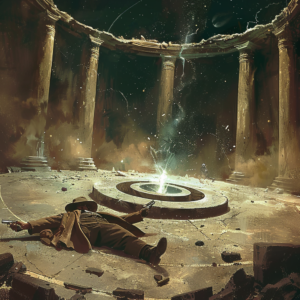
Generally speaking, with regards to practice, four main pathways, with a fifth rarely seen variant, represent the approach most people take as serious practitioners. Keep in mind that none of this is scripture and that overlap occurs in even the most focused people. However, people clearly have their preferences, and it shows.
If you want to learn how to do all of this, look up the Master course: Master Course (perseusarcaneacademy.com)
The four primary archetypes for practice are: the warrior, the doctor, the artist and the devotee.
The warrior learns from conflict. Watchwords include phrases like “confront evil and destroy all demons.” Note this does not include most modern self-styled martial artists. Simply put, warriors kill bad people. Traditionally, these people were, and still are, professional war fighters such as the knights of medieval Europe, the Samurai in Japan, etc. Modern day examples include special operators, some members of police forces and the like. If you have ever encountered one of these people, their glare is their most outstanding feature. The force of complete commitment blazes out of their eyes in a way that is impossible to miss.
The doctor learns from suffering. Watchwords include phrases like “through suffering insight.” Bearing witness to, helping other endure and providing solutions to suffering represent the core of their path. Most New Age healers are butt-fucking losers who head for the hills when confronted with the reality of this path. Medical doctors, serious Traditional Chinese Medicine practitioners and the like represent this path in life. Maintaining an appropriate level of empathy and not quitting in frustration are two of their primary challenges.
The artist learns from creation. Building things, making new products and putting recent discoveries into form represent their path. If this sounds like working engineers, tradesmen, composers, sculptors, directors, choreographers and independent businessmen then you are looking at this correctly. Most self-styled “artists”, musicians and performers are not artists. They are just screwing around. And what is not personally profitable is also rarely spiritually profitable. Don’t be one of them.
The devotee learns from service. Specifically, this refers to service to others in the name of the divine. Preaching the Gospels to others, caring for the infirm, performing rituals for lay people and similar activities take up the majority of their time. Typically, these people are members of large religious organizations. They always give up large parts of a conventional life to serve in their way and are frequently poor.
Finally, we come to the rarest of paths: the trader. The trader learns from judgment. Watchwords include phrases such as “contain chaos and defeat stasis.” These people take out the trash, and keep things balanced enough to allow for society to function between the twin peaks of dynamism and stasis. Their symbols include things like the scales, and they are frequently not nice people. Justice is blind, not kind.
When these people show up, all hell tends to break loose, an orgy of violence takes place off of which future stability is built or a brutal dictator loses his head. They are the active force that pushes the first domino in a chain or the first responder at the gates that keep barbarians from sacking the city. They may not charge a hill, but they will certainly throw a man down a stairwell.
On a practical basis, this path is the most difficult as it requires proficiency in the basics of all of the other paths. The suffering required to appropriately judge others is legendary in its scope. These people also take care of misbehavior in the esoteric community. Most people unconsciously avoid followers of this path. They have an interesting relationship with the planet of Saturn and its inhabitants. Court judges, thief catchers, assassins, advisors to leaders of mass movements and executioners are all examples of these kinds of people. Studying the lives of the saints in the Old and New Testament can provide insight with regard to their lives.
All of these paths involve suffering, loss, devotion and the expenditure of large amounts of time/effort. Interestingly, the concept of service to others and a vigorous engagement with the world are common themes.
I truly believe that the path of the hermit, or a long-term withdrawal from society, represents a deviation from true cultivation. I strongly suspect that those who successfully cultivate and subsequently achieve nothing in the world end up paying a very heavy price for this in the next life.
We incarnate to achieve something in this world. Treating life like a jailbreak voids this purpose.
If you want to learn more about how your practice changes over time, check this out: A Practitioners Lifecycle – SixtySkills







